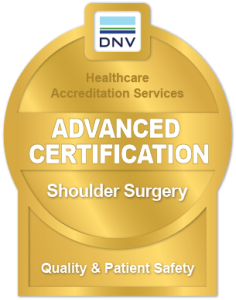 If you need shoulder surgery, you are in good hands with the board-certified shoulder specialists and rehabilitation therapists at the Orthopaedic Hospital of Wisconsin. If you don’t yet require surgery, we will help you build stronger, healthier shoulders to ease pain and avoid surgical intervention.
If you need shoulder surgery, you are in good hands with the board-certified shoulder specialists and rehabilitation therapists at the Orthopaedic Hospital of Wisconsin. If you don’t yet require surgery, we will help you build stronger, healthier shoulders to ease pain and avoid surgical intervention.
Your Shoulder Anatomy
Of all your joints, you use your shoulder the most. A ball-and-socket joint, your shoulder is more flexible and mobile than any other joint and has the ability to rotate in many directions.
The “ball” of the shoulder joint is actually the head of the humerus, and the “socket” is the glenoid portion of your scapula (shoulder blade). The acromion sits on top of the ball and socket. The acromion is a common site of bone spurs, and the acromioclavicular (AC) joint is a common site of shoulder separation.
Your rotator cuff is actually a group of four muscles that work together to provide mobility to your shoulder joint in both overhead motions and rotations. Injury in any of the rotator cuff muscles can cause pain and weakness.
Together, your rotator cuff muscles and shoulder ligaments help keep your shoulder “in socket” to avoid dislocation. The glenoid ligament, also called the labrum, plays a critical role in shoulder stability. When it is stretched, torn, or detached, the ball of the shoulder joint can move partially (subluxation) or completely (dislocation) out of joint, causing pain and weakness.
Many shoulder issues can be treated with exercise and therapy alone. Our team will assess your pain and walk you through every step of your recovery.

